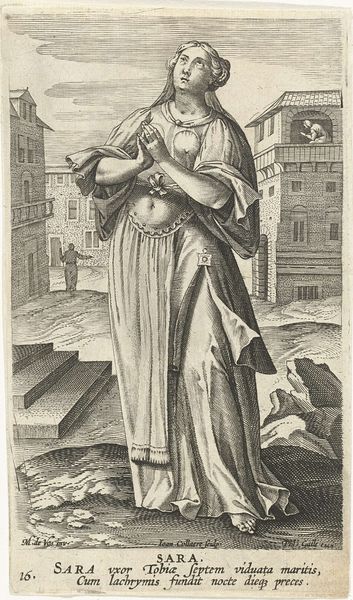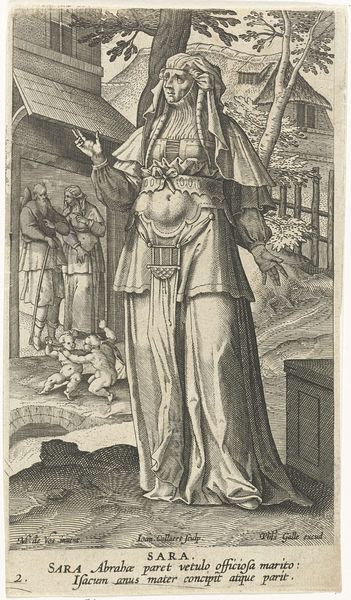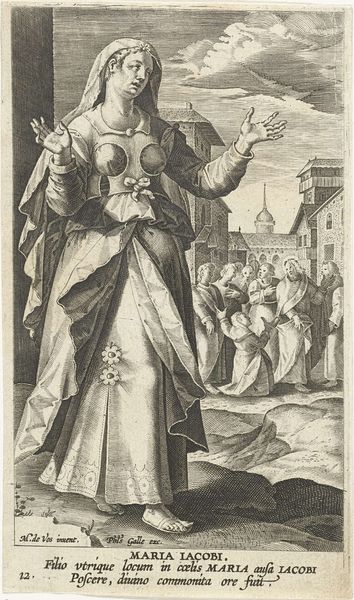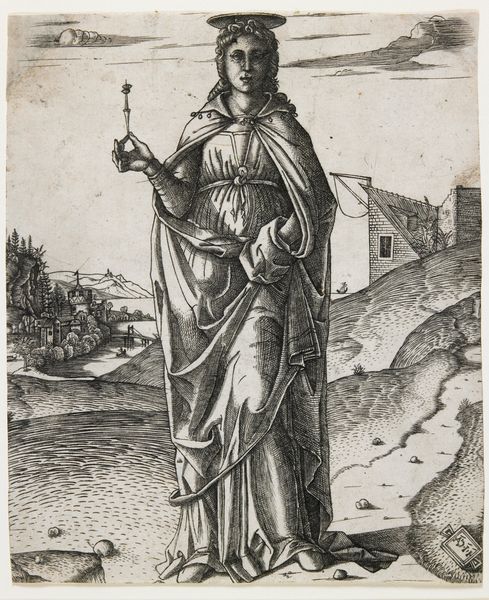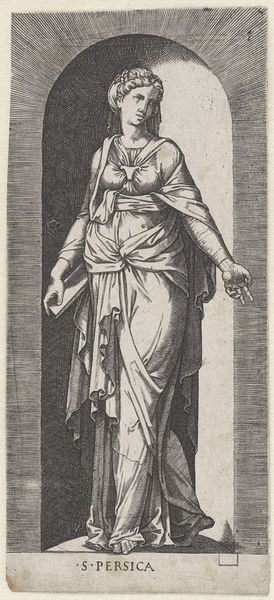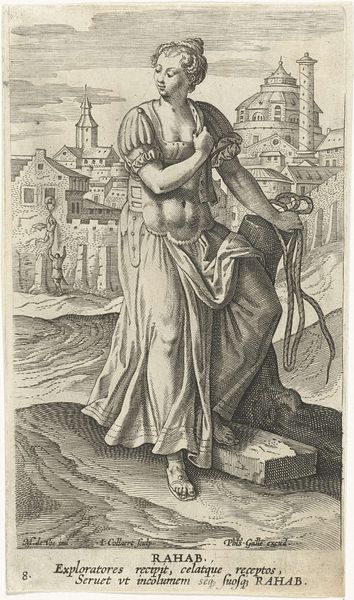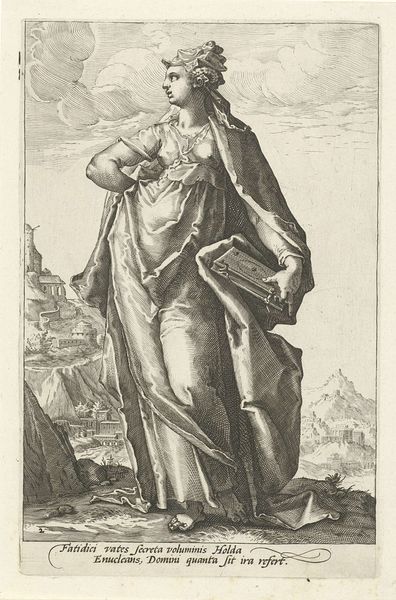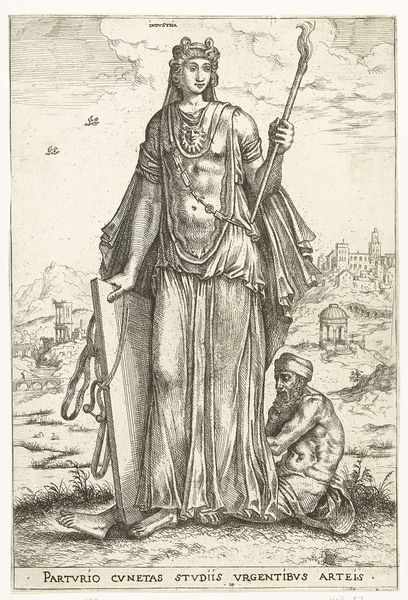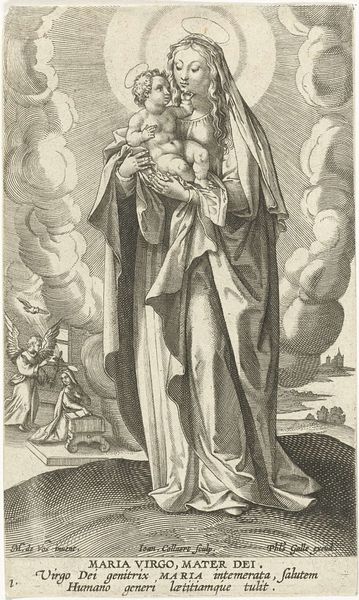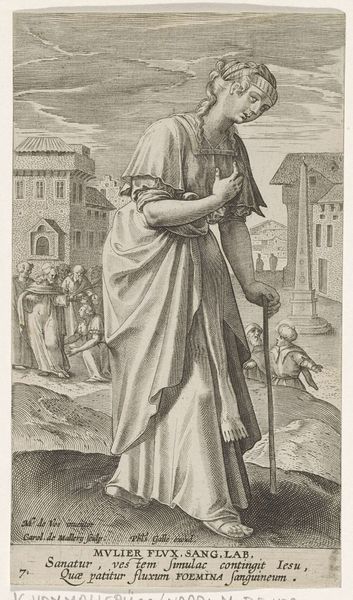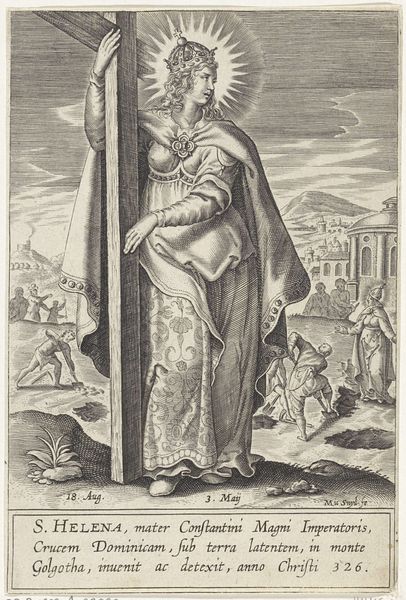
print, engraving
#
baroque
#
pen drawing
# print
#
old engraving style
#
figuration
#
line
#
history-painting
#
engraving
Dimensions: height 159 mm, width 95 mm
Copyright: Rijks Museum: Open Domain
Curator: Here we have "Wise Woman of Abel-Beth-Maachah," an engraving made between 1588 and 1595 by Jan Collaert the Second, currently held at the Rijksmuseum. Editor: Yes, it’s quite striking! The contrast between the detailed foreground figure and the busy city scene is interesting. What strikes me most is the woman's clothes. What do you see in this piece from a materialist perspective? Curator: It’s fascinating to consider this engraving in terms of its production and consumption. Look at the line work, meticulously etched onto a copper plate, a testament to skilled labor. What kind of workshop would have produced this? Who were the engravers? What was their social status? Editor: I hadn’t thought about that. I suppose printmaking allowed for wider dissemination of images than painting. Would that change the way people understood history? Curator: Precisely! Print democratized imagery. Engravings like this were commodities traded across Europe. Think about the access to biblical stories that they created. And the materials themselves—the paper, the ink—these are products of specific industries. Who benefited from their trade? Editor: So it’s not just about the "high art" of history painting, but also the labor and resources that went into making it accessible. How did prints influence broader social attitudes toward wealth or gender? Curator: Exactly. The “Wise Woman” isn't just an allegorical figure; she’s a representation, shaped by the artist's choices of labor, medium, and the social context in which it circulated. Each stage of making art embodies particular choices of selection and distribution. Editor: I never considered the material impact of distributing and producing art like this. This makes me think differently about value in art, beyond the subject matter and composition. Curator: Understanding the production process encourages us to question traditional art historical narratives, shifting the focus to labor and economics. We now see art embedded in power structures. Editor: It seems that by considering materiality we understand better not just how something was made, but how value itself is constructed and distributed.
Comments
No comments
Be the first to comment and join the conversation on the ultimate creative platform.
